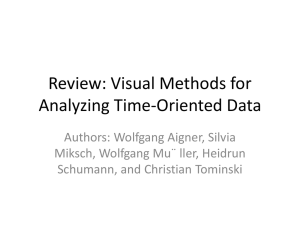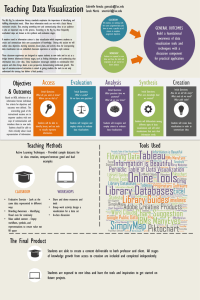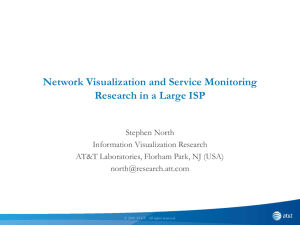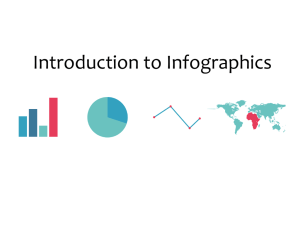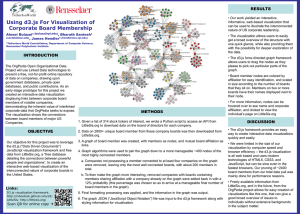Mental and Visualization Models
advertisement
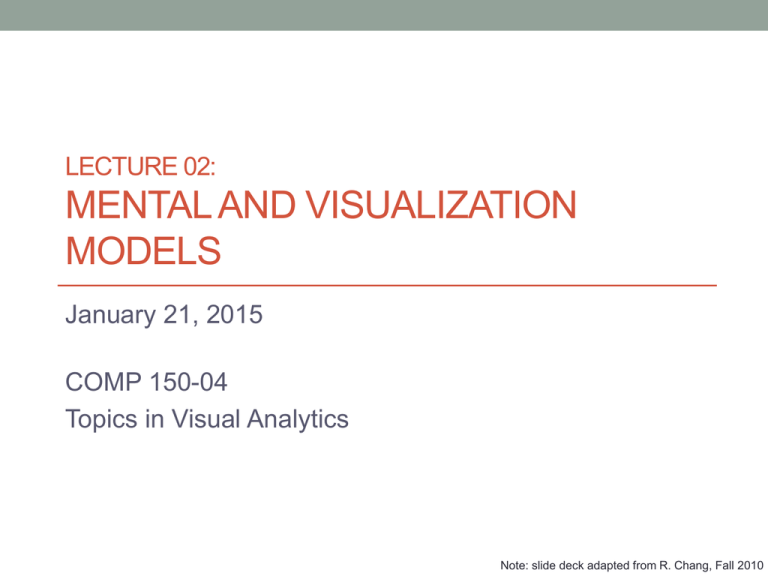
LECTURE 02: MENTAL AND VISUALIZATION MODELS January 21, 2015 COMP 150-04 Topics in Visual Analytics Note: slide deck adapted from R. Chang, Fall 2010 Announcements (1 / 2 ) • Course website has moved: http://www.cs.tufts.edu/comp/150VAN/ • Piazza Q&A is now live: https://piazza.com/tufts/spring2015/15004/home • Piazza > Resources: • Posted 5 (potentially) interesting datasets (many with nice APIs) • I’ll continue to add more as I find them, feel free to post your own! Announcements (2 / 2 ) • Drag-and-drop visualization tool suite • Tableau for Teaching has donated license keys (good for one year) for this course • Want one? Instructions posted on Piazza Outline • Mental Models • • • Illustration: the 9-dot problem Properties of mental models Visualization Models • • • • • Reference model (Card, Mackinlay, & Shneiderman) Data state reference model (Chi) Model of visualization (van Wijk) Visual analytics model (Keim) Sensemaking Loop (Pirolli & Card) The 9-dot Problem Task 1: Connect all 9 dots using only straight lines The 9-dot Problem Task 2: Connect all 9 dots using 4 straight lines The 9-dot Problem Task 3: Connect all 9 dots using 3 straight lines The 9-dot Problem Task 4: Connect all 9 dots using 1 straight line Mental Models: a Sketch Mental Models: Formalization A person’s decision-making process is bounded1 by: 1. the (incomplete) information they have available 2. the (finite) processing power of their brain 3. the (limited) amount of time they have to decide / act To cope with this, we construct mental models: abstracted, simplified versions of the world that are more tractable So how do mental models work? 1 Simon, Herbert (1957). "A Behavioral Model of Rational Choice", in Models of Man, Social and Rational: Mathematical Essays on Rational Human Behavior in a Social Setting. New York: Wiley. 1. We tend to see what we expect to see • Mental models are constructed from prior experience • We expect new input to “fit” the existing model • Recalibration is costly: given input that almost fits, we are willing to distort information in order to avoid refitting the model • Expectation is at least as strong as perception 2. Mental models form quickly, and update slowly: • “First impressions matter” • The first pieces of information can have the highest impact • The order in which we present pieces of information can shape how a person comes to understand the whole • Once a mental model is formed, it takes effort to alter it 3. New information gets incorporated into the existing model • Integrating competing perspectives into a single model can be challenging • Switching between two or more perspectives (visually or mentally) is also difficult • Real-world analysis (e.g. good guys vs. bad guys) often requires such perspective switching 4. Initial exposure interferes with accurate perception Blur 50 40 30 20 10 0 4. Initial exposure interferes with accurate perception • Note: the images in the blurry pictures may not have directly contradicted your initial mental model • The longer someone is exposed to ambiguous data, the more confident they become in their initial model (even if new data presents strong evidence it is wrong) • Incremental information can be misleading • Important to be aware of this when designing overviews The good, the bad, and the ugly… The good: • • Well-tuned mental models make experts capable of processing huge amounts of information quickly This frees up more processing power, compares with having to build a new mental model from scratch The bad: • • People (esp. experts) tend not to notice information that contradicts their mental model A “fresh pair of eyes” can be beneficial The ugly: • • Mental models are unavoidable: everyone has them, and no two are exactly alike The key is to be aware of how mental models form, how they shape perception, and how to support (or challenge) them Questions? Models in Visualization and Visual Analytics Mental models = abstractions of how the world works Visualization / VA models = abstractions of how vis works: • Provide a way of picturing/talking about how humans interact with visualizations • Common language for describing different parts of the visual analytic process • Every model is an (over) simplification: reader beware! 1999: A reference model for visualization Raw Data: Idiosyncratic formats Data Tables: Relations (cases by variables) + metadata Visual Structures: Spatial substrates + marks + graphical properties View: graphical parameters (position, scaling, clipping, …) Image source: Card, Stuart K., Jock D. Mackinlay, and Ben Shneiderman, eds. Readings in information visualization: using vision to think. Morgan Kaufmann, 1999. pp 17. Discussion What’s missing in this model? 2000: Chi’s Data State Reference Model Value: The raw data Analytical Abstraction: Data about data, or information (aka, metadata) Visualization Abstraction: Information that is visualizable on the screen using a visualization technique View: The end-product of a visualization mapping, where the user sees and interprets the picture presented Data Transformation: Generates some form of analytical abstraction from the value (usually by extraction) Visualization Transformation: Takes an analytical abstraction and further reduces it into some form of visualization abstraction, which is visualizable content. Visual Mapping Transformation: Takes information that is in a visualizable format and presents a graphical view. 2000: Chi’s Data State Reference Model Model applied to visualizing web sites Image source: Chi, Ed H. "A taxonomy of visualization techniques using the data state reference model." Information Visualization, 2000. InfoVis 2000. IEEE Symposium on. IEEE, 2000. Discussion What’s missing in this model? 2005: Van Wijk’s Model of Visualization Image source: Van Wijk, Jarke J. "The value of visualization." Visualization, 2005. VIS 05. IEEE. IEEE, 2005. 2005: Van Wijk’s model of visualization (1) (2) (3) • • • • • • • D = Data V = visualization S = specification (params) I = image P = perception K = knowledge E = exploration (4) (5) Discussion What’s missing in this model? 2008: Keim’s Visual Analytics Model interactions Pre-process input interactions Image source: Keim, Daniel, et al. Visual analytics: Definition, process, and challenges. Springer Berlin Heidelberg, 2008. Discussion What’s missing in this model? Pirolli-Card Sensemaking Loop Model: Pirolli, Peter, and Stuart Card. "The sensemaking process and leverage points for analyst technology as identified through cognitive task analysis." Proceedings of International Conference on Intelligence Analysis. Vol. 5. McLean, VA: Mitre, 2005. Image source: Thomas, James J. and Kristin A. Cook "Illuminating The Path" (2005): pp. 44 Pirolli-Card Sensemaking Loop • • • • • • Bottom up: Search and filter Read and extract Schematize Build case Tell story • • • • • • Top down: Re-evaluate Search for support Search for evidence Search for relations Search for information Discussion What’s missing in this model? Questions / Comments? For next class • Please read the Executive Summary and Ch.1 of [R1] (available on the course website) • Next week, we’ll be doing two crash courses • Monday: data wrangling with Python • Wednesday: statistical analysis with R • If you have a laptop and want to follow along, please install python and Rstudio before you come to lecture

